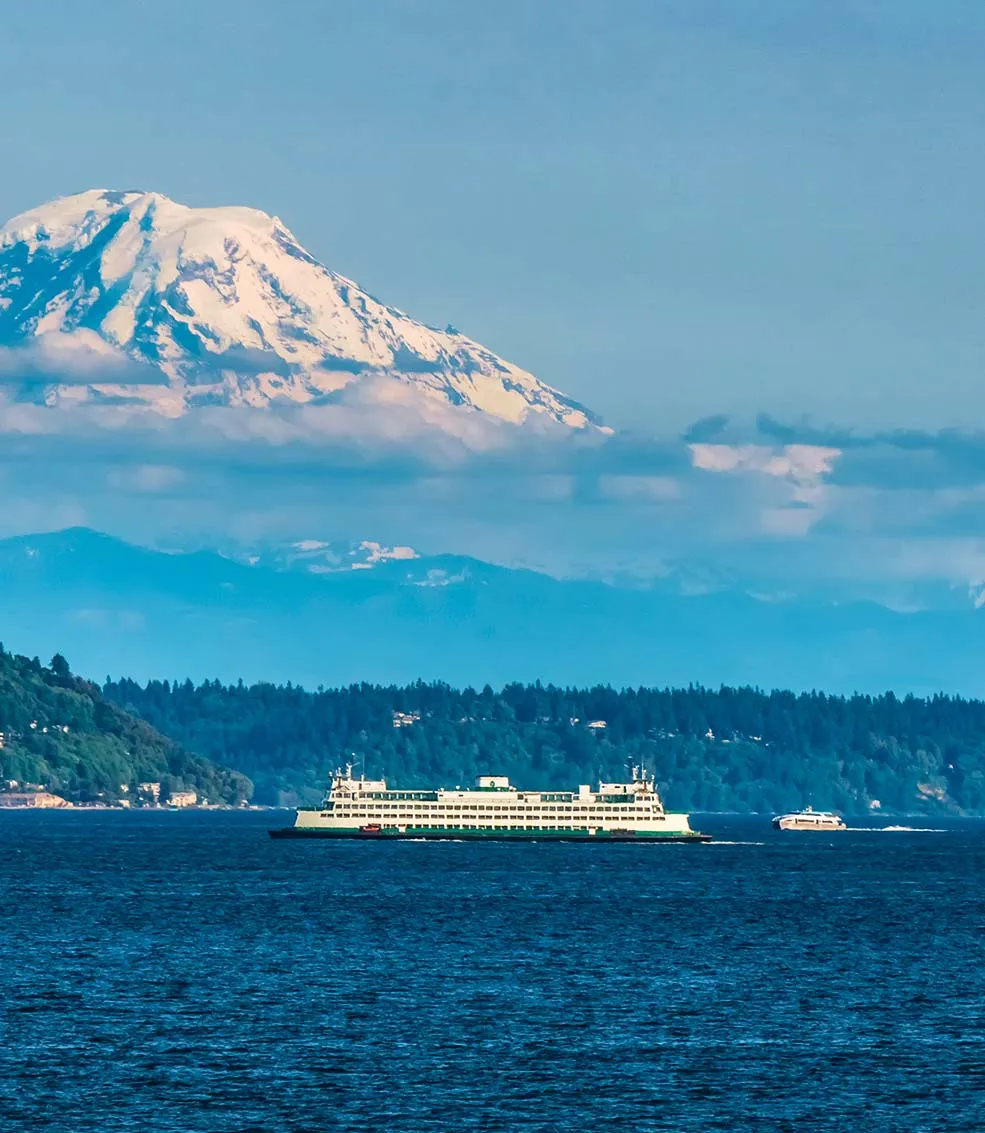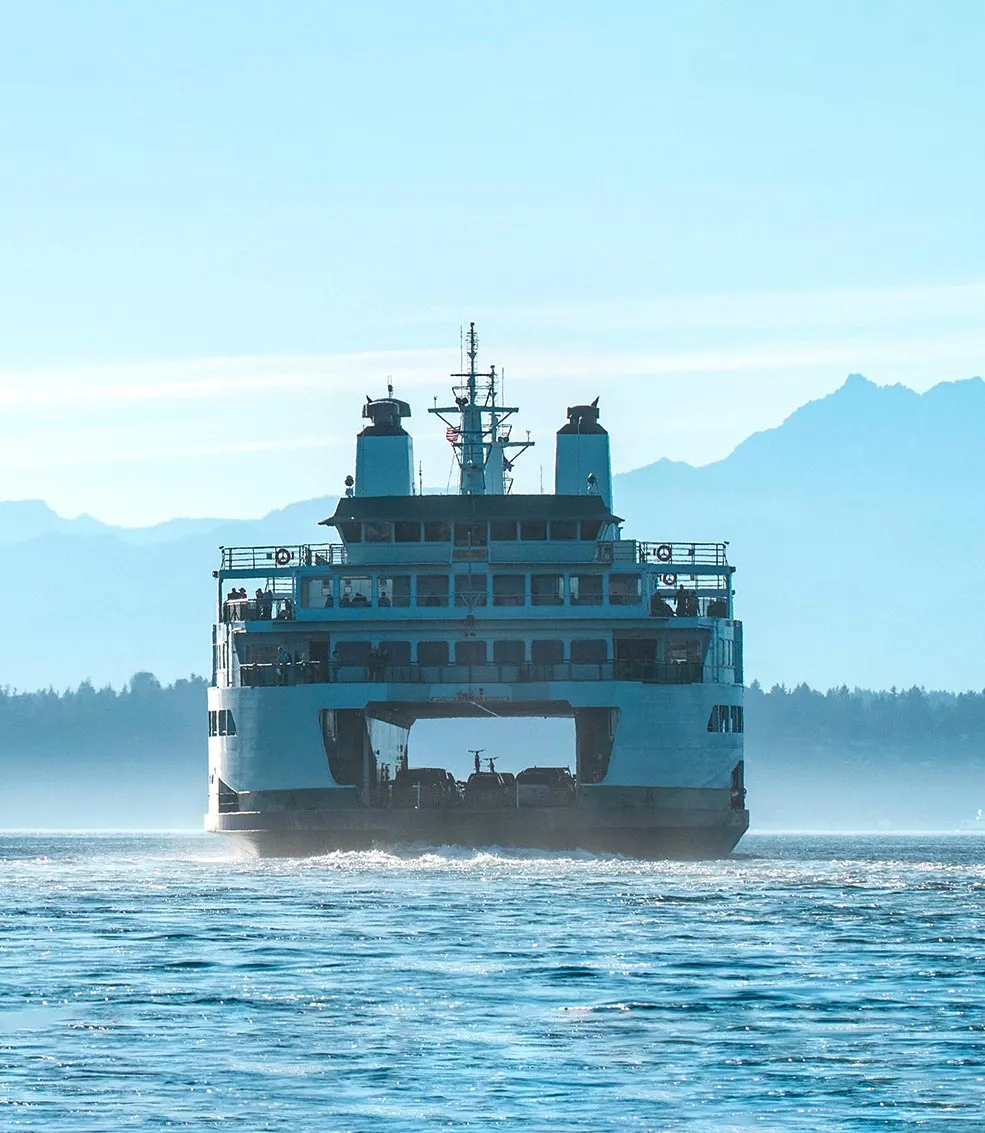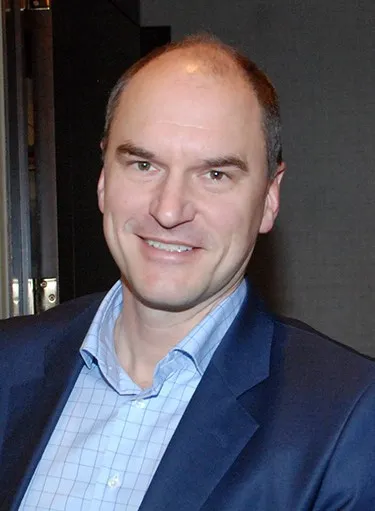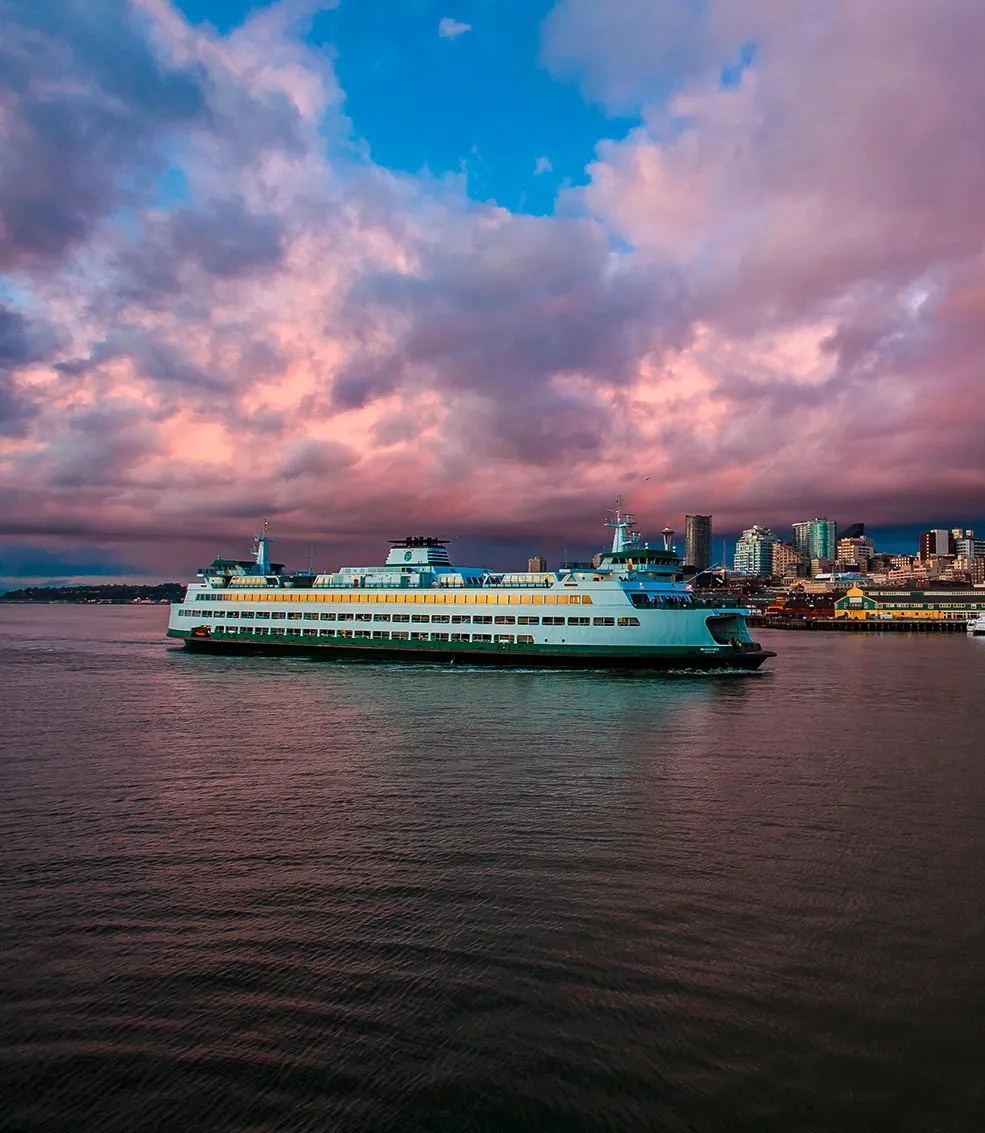Washington State Ferries realizes bold decarbonization plans
Within the scope of a broad initiative to build a sustainable maritime industry, Washington State is planning to electrify its large ferry fleet over the next two decades. DNV GL has been supporting the state government’s efforts, drawing on expertise from other maritime clusters.
Washington State, the northwesternmost state of the US, has an enviably scenic coastal area marked by many islands, deep inlets, and majestic mountains. More than half of the State population is concentrated in the greater Seattle metropolitan area. Puget Sound, the main inlet connecting the Seattle area with the Pacific Ocean, is a complex system of side channels, basins and waterways speckled with countless islands. To interconnect the coastal communities, Washington State maintains the largest ferry system in the US.

Decarbonizing a key element of public transport
Washington State Ferries (WSF), an agency within the Washington State Department of Transportation, currently operates 23 ferries which serve 20 terminals and transport close to 25 million passengers per year. But with some of these vessels originally built between the 1950s and 1970s, much of the fleet is aging fast. The ferry system has just announced plans to order 16 new, state-of-the-art electric-fuel hybrids over the next 20 years. Thirteen of these are to replace legacy vessels that will be retired, and three will serve as backup. In addition, WSF is converting their three largest vessels to battery hybrid electric, which will make them among the largest car and passenger battery-hybrid ferries in the world.
As an added benefit, building these new ships will support the local shipbuilding industry and related supply chain. In addition, electric charging stations will be installed at the terminals for these innovative boats.

Focus on the big picture
The Washington State Ferries electrification project is part of a much larger State initiative, a detailed strategic action plan called “Washington Maritime Blue” which aims to support “the development of maritime business, technology, and practices that promote a sustainable future contributing to economic growth, ecological health, and thriving communities” for the state. The Maritime Innovation Advisory Council, the body in charge of stewarding the vision and setting the course for the strategy, was first convened by Governor Jay Inslee in December 2017.
By the year 2050, Washington state wants to be established as a leading international maritime cluster that is home to “the nation’s most competitive and sustainable maritime industry”. The Maritime Blue Advisory Council and Task Force for the initiative has identified emission reduction and decarbonization as key goals, with electrification of the state’s ferries in particular as key demonstration projects for the Maritime Blue strategy.
Maritime and Energy experts from DNV GL were contracted by the Washington State Department of Commerce to assist in the development of recommendations for the maritime industry and in leading the stakeholder engagement process. "To succeed, the initiative needed to gather broad and inclusive input from all stakeholder groups, including industry and labor, science and trade, Tribes, environmental, workforce development and other organizations from all parts of the state. Areas of focus to achieve these goals include technology research and development, policy, regulations and finance, education and training, implementation of best practices and standards, certification of systems and solutions, as well as communication and collaboration," Anders Mikkelsen, Business Development Manager at DNV GL states.

Building on Norwegian expertise
Innovative design, clean technology and best practices are key elements of the strategy, which was inspired by other successful maritime cluster development projects, such as Norway’s Green Coastal Shipping Programme. Innovation Norway lead a delegation of Norwegian industry and government representatives to visit Washington State to discuss opportunities for collaboration, as well as hosting a Washington State delegation in a bi-annual visit to Norway. Both visits to Norway included half-day meetings hosted by DNV GL at the global headquarters in Hovik. DNV GL’s global expertise has been key to the development of the strategic roadmap for Washington State, and in moving forward with implementation.
Following the development of the Washington Maritime Blue Strategy by the DNV GL experts, the Washington Maritime Blue Cluster was rolled out in January 8, 2019 at an event in Seattle. The plan and presentation of key topics was delivered to the Governor and other key Washington State stakeholders. Today, more than forty companies and organizations have joined Washington Maritime Blue Cluster organization.

Accumulated know-how for the maritime cluster
Among the top recommendations that resulted from the Maritime Blue strategy is the establishment of a Maritime Innovation Center, a center of excellence that will support the maritime industry by accelerating incubation, development and adoption of technologies while providing easy, direct access to expertise on maritime sustainability. In particular, the center will focus on maritime decarbonization and electrification, accelerating start-up companies, support of workforce development, and fostering collaboration across the state’s maritime industry. DNV GL’s was awarded a contract to support the Port of Seattle in developing a business plan for the Maritime Innovation Center. Design work is now proceeding through the Port of Seattle, and the State has budgeted capital funding for the facility. In addition, the WA Maritime Blue Cluster organization has been funded to launch a pilot accelerator program this year.
In all of these projects DNV GL has been able to contribute proven expertise in maritime and clean technology, cluster management and coordination of multiple stakeholders and perspectives. “DNV GL is a proud partner in the project to develop this Maritime Blue Strategy,” said Antony D’Souza, Executive Vice President DNV GL Maritime Americas, on the occasion of the launch of the strategy and cluster. “We will continue to support the state as it positions itself in the competitive national and international marketplace through the Washington Maritime Blue cluster.”
Another key part of implementing the strategy is the Blue Forums, where key issues and industry challenges are discussed in a conference like format. The forum provides the government agencies, the maritime industry and R&D institutions with a platform to identify collaboration opportunities in areas such as future energy needs and decarbonization. The 1st Blue Forum was held in May 2019, and convened maritime and tech industry leaders in Seattle to discuss the roll and opportunity for data, digitalization and IoT solutions for maritime optimization and decarbonization. The 2nd Blue Forum in October 2019 discussed research and development pathways for maritime energy solutions. The goal was to identify R&D gaps and agree on a joint roadmap for actions and investments.
"Working to ensure the Washington Maritime Blue strategy is not a document that sits on a shelf, the new cluster is well on its way in implementing the Blue scope of work. This includes moving Blue Forward through R&D, Joint Industry Projects and business services; bringing Blue Focus through communications that raise awareness of the industry’s impact; hosting Blue Forums for knowledge sharing and networking; driving Blue Finance to increase access to public and private funding; and much more," Mikkelsen resumes. "Working together, Washington Maritime Blue will accelerate innovation for a sustainable maritime future," D’Souza adds.
Contact us

- Key image - Dalo Collis – Shutterstock.com
- Side image 2 - MattLphotography – Shutterstock.com
- Text image 1 - Daniel Gasienica – Shutterstock.com
- Side image 3 - Clifford Wayne Estes – Shutterstock.com
View image copyright information

